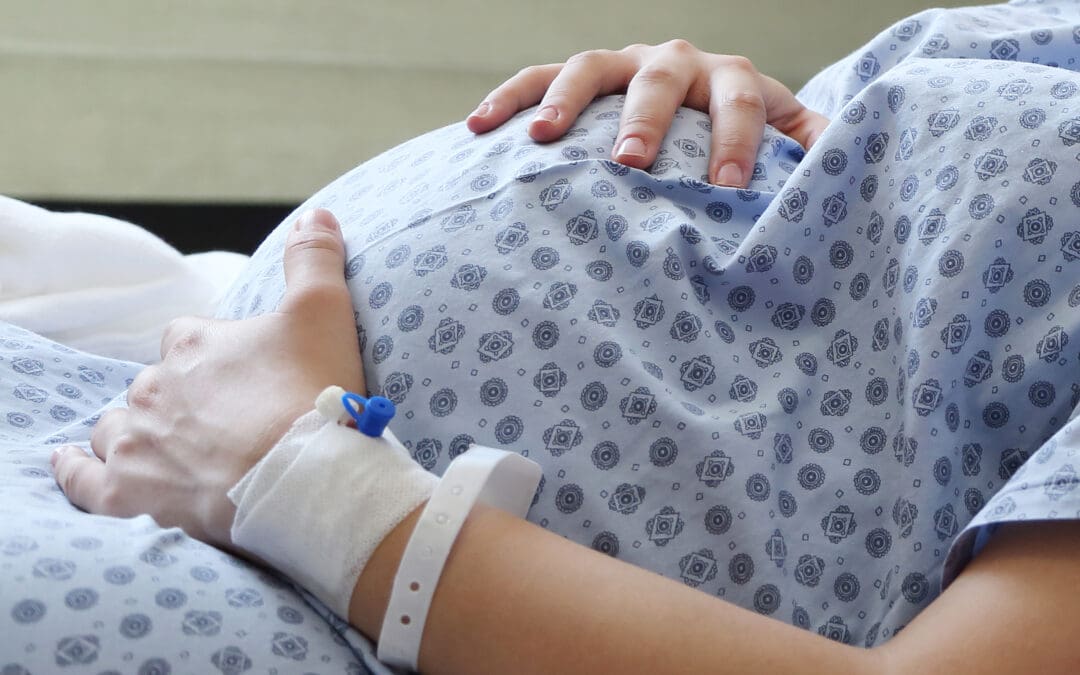“Primum Non Nocere” is the first Latin phrase that most medical students learn. Translation: “First Do No Harm.” Physicians have access to scalpels, needles, radiation, chemotherapy, and even robots. Use these tools to heal, and ‘do no harm’.
The second rule that we are taught is: All patients have rights. Most States now have ‘Patient Bills of Rights.’ Are all patients granted these rights? Yes. What about patients not born in the United States? Yes. What about patients not born in the United States… YES? Yes! We treat the Pre-Born as patients while still in the womb. Life-saving blood transfusions, open heart surgery, laser vascular surgery, spina bifida corrective surgery, and even vascular brain surgery are all now being performed on babies in the womb. ‘A Patient is a Person, no matter how small.’
From the moment of conception, one cell is genetically unique from the mother, father, and the other 8 billion people of the planet. Moms and babies can even have different blood types. The blood of the mother and the blood of the baby do not mix. Everything required by the baby crosses from the mother via the placenta and everything that the baby needs to eliminate crosses from the baby to the mother via the placenta.
Sometimes, some blood cells from the baby erroneously cross over into the circulation of the mother. The immune system of the mother sees these cells as ‘foreign’ and makes antibodies against them. These antibodies can cross from the mother into the circulation of the baby and start to attack the baby’s cells.
Sometimes, so many cells are attacked by these antibodies that the baby can become anemic, go into heart failure, and die. We use ultrasound technology to foresee severe anemia before it occurs and provide the baby with a lifesaving blood transfusion. A long, thin needle is guided by ultrasound through the skin of the mother, through the wall of the womb, and directly into the vein of the umbilical cord. A predetermined volume of O negative is donated, blood bank blood is transfused into the circulation of the baby, and a life is saved.
If we can provide a life-saving blood transfusion to a baby in the womb has the baby met the criteria of being a ‘patient’? Yes. And a “Patient is a Person, no matter how small.”
Recently a baby at 27 weeks gestation was diagnosed by ultrasound with a tumor of the heart called a teratoma. This tumor was growing rapidly and doctors at the Cleveland Clinic estimated that the baby would die from this tumor in 1-2 weeks unless something was done.
Option #1 was to deliver this baby, perform open heart surgery to remove the tumor, and have this tiny baby recover in the Neonatal Intensive Care Nursery (NICU). However, we would now have a tiny preemie recovering from open heart surgery in the NICU.
Option #2 was to perform this same surgery while the baby was still in the womb, allowing the baby to heal while still in the womb, then deliver the baby 10 weeks later at 37 weeks gestation.
The parents opted for option #2.
The mother had an epidural placed by her anesthesiologist. She was comfortable. An incision was made on her abdomen and then her womb and the hands and arms of the baby were brought through the incision.
A second anesthesiologist then placed an IV in the right hand of the baby. The baby was IV given fluids, IV Fentanyl for pain, and a paralytic called Norcuron to prevent the baby from moving during the surgery.
The pediatric cardiology team then made an incision in the chest of the baby, exposed the heart of the baby, and removed the tumor from the heart of the baby. Almost immediately the heart of the baby started to beat normally. The chest of the baby was closed, IV removed, the hands returned to the womb, and the womb and abdomen of the mother were closed and the mother was allowed to recover. The baby tolerated the surgery well and was delivered 10 weeks later at 37 weeks gestation.
If we can perform open heart surgery on a baby in the womb and provide them with their anesthesia team, are they a patient? Yes. And a “Patient is a Person, no matter how small.”
Twins are an amazing joy, but there is twice as much that needs to be followed during the pregnancy. Occasionally, identical twins will share one placenta. And as often occurs with siblings, they do not share this one placenta equally. When this results in a severe discrepancy in the growth of the twins, we need to teach these identical siblings how to share. When we diagnose this condition in the womb, we refer these moms and their babies to Texas Children’s Hospital in Houston, Texas. Their team teaches these babies how to share. The surgeons do this by passing a fetoscope equipped with a laser through the skin of the mother, through the wall of the womb, and then using the laser to divide the placenta into two halves forcing the twins the lesson of sharing nutrition. The mothers and their babies are returned to our practice 10 days later. We follow them closely and then deliver babies that are much more equal in size and weight.
If we can use lasers to teach identical twins to share in the womb, are they patients? Yes. And a “Patient is a Person, no matter how small.”
Spina Bifida affects 2,000 babies each year. Sadly 70-80% of the time the babies are aborted. We are now in our third generation of treating these babies in the womb. The first generation of therapy involved making an incision in the womb of the baby and then surgically correcting the condition of the baby while still in the womb.
The data showed that the babies that had the procedure performed while in the womb, had better control of their bodily functions than similar babies that had the corrective surgery performed after their birth.
The second generation of therapy utilized a fetoscope to access the baby rather than an incision to repair the spine. It is less invasive and very effective.
The third generation is called the CuRe trial and is being conducted at UC Davis in Berkley, California. Stem cells, harvested from the placentas of already delivered babies, are surgically applied directly to the defect of the spine of the baby in the womb.
These stem cells regenerate new spinal cord tissue while the baby is growing in the womb. An additional grant of $15 million was recently provided for this research and we are optimistic that the CuRe Trial will live up to its name.
If we can treat and even cure Spina Bifida for babies in the womb are they patients? Yes. And a “Patient is a Person, no matter how small”.
A Vein of Galen Malformation (VOGM) is a vascular abnormality that can result in the death of 25% of babies with this condition soon after delivery. A team at Boston Children’s Hospital has developed a technique to repair this abnormality of the arteries and veins in the brain of the baby while still in the womb. Vascular coils are based directly into the abnormal vessel in the brain of the baby, thus blocking the abnormal blood flow. The baby is later delivered and usually requires no additional therapy.
If we can perform brain surgery on babies in the womb are they patients? Yes. And a “Patient is a Person, no matter how small.”
Are there medical conditions that can affect and threaten the lives of mothers? Yes. However, the cure for these conditions is delivery of the baby, NOT taking the life of the baby. Most Obstetricians can deliver a baby urgently via Cesarean Section in less than a minute. Separate the mother and the pregnancy. Provide the highest quality care for both the mother and the baby and pray that both do well.
Conditions such as Severe Pre-eclampsia, Eclampsia, and HELLPS Syndrome can be a threat to the life of the mother. When the life of a pregnant woman is threatened by a pregnancy-related condition, current Arkansas law would in no way prevent or delay any treatment to save the life of the mother. Modern Neonatal Intensive Care Units (NICU) are now often saving the lives of babies delivered at 23-24 weeks gestation.
As technology improves, more lives will be saved. Unfortunately, some pregnancy-related conditions have not advanced to save the lives of ALL babies in the womb. Ectopic pregnancy is such an example. When a pregnancy has implanted outside of the womb, most frequently in the fallopian tube, the life of the mother is directly threatened.
There is currently no technology available that would allow for the abnormally located pregnancy to be moved to a safer location. In such situations, Arkansas law would not prevent or delay the physician from removing the pregnancy from the mother’s abdomen and saving her life. If the technology existed to save the lives of both patients, we would. But that technology does not exist, yet.
Tuesday the Arkansas Attorney General’s Office will decide if the “Arkansas Reproductive Healthcare Amendment” will be allowed to be on the 2024 Arkansas ballot. If passed, it would block any law from being passed that could “prohibit, penalize, delay or restrict” access to abortion up to 18 weeks gestation for any reason. Abortion for ANY reason up to 18 weeks gestation would be Constitutionally protected, and NO law passed could change that.
Remember, we have saved the lives of babies in the womb by giving them lifesaving blood transfusions also at 18 weeks gestation. The will of the people of Arkansas has been clear. They have elected Representatives, Senators, and a Governor that share their values. Patients have rights, and the State of Arkansas will defend the rights of all patients, including those patients still in the wombs of their mothers.
“A Patient is a Person, no matter how small.”
Sincerely,
Dr. William Lile, D.O. , FACOG
ProLifeDoc.org
Dr. William Lile is Board Certified in Obstetrics and Gynecology. He has been in practice for over 25 years and has delivered over 4,000 babies.

